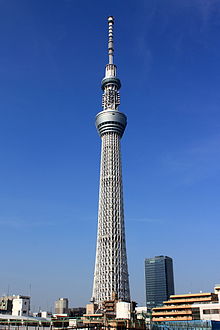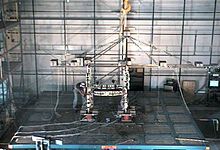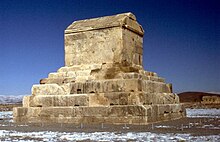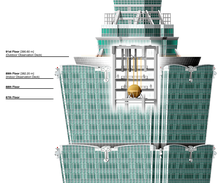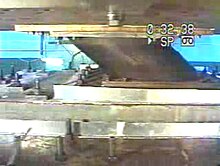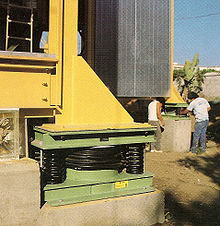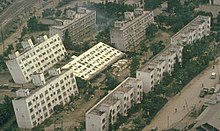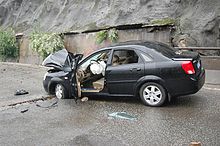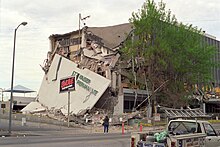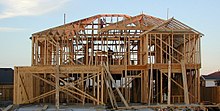Jordskjelvteknikk is an tverrfaglig branch of engineering that designs and analyzes structures, such as buildings and bridges, with jordskjelv in mind. Its overall goal is to make such structures more resistant to earthquakes. An earthquake (or seismic) engineer aims to construct structures that will not be damaged in minor shaking and will avoid serious damage or collapse in a major earthquake. Earthquake engineering is the scientific field concerned with protecting society, the natural environment, and the man-made environment from earthquakes by limiting the seismisk risiko to sosialt-økonomisk acceptable levels.1 Traditionally, it has been narrowly defined as the study of the behavior of structures and geo-structures subject to seismisk belastning; it is considered as a subset of konstruksjonsteknikk, geoteknikk, maskinteknikk, kjemiteknikk, anvendt fysikk, etc. However, the tremendous costs experienced in recent earthquakes have led to an expansion of its scope to encompass disciplines from the wider field of sivilingeniør, maskinteknikk, atomteknikk, and from the samfunnsfag, especially sosiologi, statsvitenskap, økonomi, and finansiere.2
Hovedmålene med jordskjelvteknikk er:
Foresee the potential consequences of strong jordskjelv on Urbane områder and civil infrastructure.
Design, construct and maintain structures to utføre at earthquake exposure up to the expectations and in compliance with byggeforskrifter.3
A riktig konstruert struktur does not necessarily have to be extremely strong or expensive. It has to be properly designed to withstand the seismic effects while sustaining an acceptable level of damage.
Seismisk belastning
Seismisk belastning means application of an earthquake-generated excitation on a structure (or geo-structure). It happens at contact surfaces of a structure either with the ground,5 with adjacent structures,6 or with gravitasjonsbølger from flodbølge. The loading that is expected at a given location on the Earth's surface is estimated by engineering seismologi. It is related to the seismisk fare of the location.
Seismisk ytelse
Jordskjelv or seismisk ytelse defines a structure's ability to sustain its main functions, such as its sikkerhet and brukbarhet, på and etter a particular earthquake exposure. A structure is normally considered sikker if it does not endanger the lives and velvære- of those in or around it by partially or completely collapsing. A structure may be considered brukbar if it is able to fulfill its operational functions for which it was designed.
Grunnleggende konsepter for jordskjelvteknikken, implementert i de viktigste byggeforskriftene, forutsetter at en bygning skal overleve et sjeldent, veldig alvorlig jordskjelv ved å påføre betydelige skader, men uten å kollapse globalt.7 On the other hand, it should remain operational for more frequent, but less severe seismic events.
Seismisk ytelsesvurdering
Ingeniører må vite det kvantifiserte nivået av den faktiske eller forventede seismiske ytelsen knyttet til den direkte skaden på en individuell bygning som er utsatt for en spesifisert jordrysting. En slik vurdering kan utføres enten eksperimentelt eller analytisk.
Eksperimentell vurdering
Experimental evaluations are expensive tests that are typically done by placing a (scaled) model of the structure on a riste-bordet that simulates the earth shaking and observing its behavior.8 Such kinds of experiments were first performed more than a century ago.9 Only recently has it become possible to perform 1:1 scale testing on full structures.
På grunn av den kostbare naturen til slike tester, har de en tendens til å bli brukt hovedsakelig for å forstå den seismiske oppførselen til strukturer, validere modeller og verifisere analysemetoder. Når de først er riktig validert, har beregningsmodeller og numeriske prosedyrer en tendens til å bære den største byrden for vurdering av seismisk ytelse av strukturer.
Analytisk/numerisk vurdering
Seismisk ytelsesvurdering or seismisk strukturell analyse is a powerful tool of earthquake engineering which utilizes detailed modelling of the structure together with methods of structural analysis to gain a better understanding of seismic performance of building and ikke-byggende strukturer. Teknikken som formelt konsept er en relativt ny utvikling.
In general, seismic structural analysis is based on the methods of strukturell dynamikk.10 For decades, the most prominent instrument of seismic analysis has been the earthquake responsspekteret method which also contributed to the proposed building code's concept of today.11
However, such methods are good only for linear elastic systems, being largely unable to model the structural behavior when damage (i.e., ikke-linearitet) appears. Numerical trinn-for-trinnsintegrasjon proved to be a more effective method of analysis for multi-degree-of-freedom strukturelle systemer with significant ikke-linearitet under a flyktig process of ground motion excitation.12 Use of the endelig element metode is one of the most common approaches for analyzing non-linear interaksjon med jordstruktur computer models.
I utgangspunktet utføres numerisk analyse for å evaluere bygningers seismiske ytelse. Ytelsesevalueringer utføres vanligvis ved å bruke ikke-lineær statisk pushover-analyse eller ikke-lineær tids-historieanalyse. I slike analyser er det viktig å oppnå nøyaktig ikke-lineær modellering av strukturelle komponenter som bjelker, søyler, bjelke-søyleskjøter, skjærvegger osv. Derfor spiller eksperimentelle resultater en viktig rolle i å bestemme modelleringsparametrene til individuelle komponenter, spesielt de som er gjenstand for betydelige ikke-lineære deformasjoner. De individuelle komponentene settes deretter sammen for å lage en fullstendig ikke-lineær modell av strukturen. Dermed blir skapte modeller analysert for å evaluere ytelsen til bygninger.
The capabilities of the structural analysis software are a major consideration in the above process as they restrict the possible component models, the analysis methods available and, most importantly, the numerical robustness. The latter becomes a major consideration for structures that venture into the non-linear range and approach global or local collapse as the numerical solution becomes increasingly unstable and thus difficult to reach. There are several commercially available Finite Element Analysis software's such as CSI-SAP2000 and CSI-PERFORM-3D, MTR/SASSI, Scia Engineer-ECtools, ABAQUS, and Ansys, all of which can be used for the seismic performance evaluation of buildings. Moreover, there is research-based finite element analysis platforms such as OpenSees, MASTODON, which is based on the ELG Rammeverk, RUAUMOKO og den eldre DRAIN-2D/3D, hvorav flere nå er åpen kildekode.
Forskning for jordskjelvteknikk
Forskning for jordskjelvteknikk betyr både felt- og analytisk undersøkelse eller eksperimentering beregnet på oppdagelse og vitenskapelig forklaring av jordskjelvtekniske relaterte fakta, revisjon av konvensjonelle konsepter i lys av nye funn, og praktisk anvendelse av de utviklede teoriene.
The National Science Foundation (NSF) is the main United States government agency that supports fundamental research and education in all fields of earthquake engineering. In particular, it focuses on experimental, analytical and computational research on design and performance enhancement of structural systems.
The Earthquake Engineering Research Institute (EERI) is a leader in dissemination of jordskjelvteknisk forskning related information both in the U.S. and globally.
A definitive list of earthquake engineering research related riste bord around the world may be found in Experimental Facilities for Earthquake Engineering Simulation Worldwide.14 The most prominent of them is now E-Defense Shake Table15 in Japan.
Store amerikanske forskningsprogrammer
NSF also supports the George E. Brown, Jr. Nettverk for simulering av jordskjelvteknikk
The NSF Hazard Mitigation and Structural Engineering program (HMSE) supports research on new technologies for improving the behaviour and response of structural systems subject to earthquake hazards; fundamental research on safety and reliability of constructed systems; innovative developments in analyse and model based simulation of structural behaviour and response including soil-structure interaction; design concepts that improve struktur ytelse and flexibility; and application of new control techniques for structural systems.16
(NEES) that advances knowledge discovery and innovation for jordskjelv and flodbølge loss reduction of the nation's civil infrastructure and new experimental simulation techniques and instrumentation.17
NEES-nettverket har 14 geografisk-distribuerte, delte-laboratorier som støtter flere typer eksperimentelt arbeid:17 geotechnical centrifuge research, riste-bordet tests, large-scale structural testing, tsunami wave basin experiments, and field site research.18 Participating universities include: Cornell University; Lehigh University; Oregon State University; Rensselaer polytekniske institutt; Universitetet i Buffalo, State University of New York; University of California, Berkeley; University of California, Davis; University of California, Los Angeles; University of California, San Diego; University of California, Santa Barbara; University of Illinois, Urbana-Champaign; University of Minnesota; University of Nevada, Reno; and the University of Texas, Austin.17
The equipment sites (labs) and a central data repository are connected to the global earthquake engineering community via the NEEShub website. The NEES website is powered by HUBzero software developed at Purdue University for nanoHUB specifically to help the scientific community share resources and collaborate. The cyberinfrastructure, connected via Internett2, gir interaktive simuleringsverktøy, et utviklingsområde for simuleringsverktøy, et kuratert sentralt datalager, animerte presentasjoner, brukerstøtte, telepresence, mekanisme for opplasting og deling av ressurser, og statistikk om brukere og bruksmønstre.
Denne cyberinfrastrukturen lar forskere: trygt lagre, organisere og dele data innenfor et standardisert rammeverk på et sentralt sted; fjernobservere og delta i eksperimenter ved bruk av synkroniserte-sanntidsdata og video; samarbeide med kolleger for å lette planlegging, ytelse, analyse og publisering av forskningseksperimenter; og gjennomføre beregnings- og hybridsimuleringer som kan kombinere resultatene av flere distribuerte eksperimenter og koble fysiske eksperimenter med datasimuleringer for å muliggjøre undersøkelse av den generelle systemytelsen.
Disse ressursene gir i fellesskap midler for samarbeid og oppdagelse for å forbedre den seismiske utformingen og ytelsen til sivile og mekaniske infrastruktursystemer.
Jordskjelvsimulering
The very first jordskjelvsimuleringer were performed by statically applying some horisontale treghetskrefter based on skalert topp bakkeakselerasjoner to a mathematical model of a building.19 With the further development of computational technologies, statisk approaches began to give way to dynamisk ones.
Dynamic experiments on building and non-building structures may be physical, like riste-bordtesting, or virtual ones. In both cases, to verify a structure's expected seismic performance, some researchers prefer to deal with so called "real time-histories" though the last cannot be "real" for a hypothetical earthquake specified by either a building code or by some particular research requirements. Therefore, there is a strong incentive to engage an earthquake simulation which is the seismic input that possesses only essential features of a real event.
Noen ganger forstås jordskjelvsimulering som en gjenskaping- av lokale effekter av en kraftig jordskjelv.
Struktursimulering
Theoretical or experimental evaluation of anticipated seismic performance mostly requires a struktursimulering which is based on the concept of structural likeness or similarity. Likheten is some degree of analogi or likhet between two or more objects. The notion of similarity rests either on exact or approximate repetitions of mønstre in the compared items.
In general, a building model is said to have similarity with the real object if the two share geometrisk likhet, kinematisk likhet and dynamisk likhet. The most vivid and effective type of similarity is the kinematisk one. Kinematisk likhet exists when the paths and velocities of moving particles of a model and its prototype are similar.
The ultimate level of kinematisk likhet is kinematisk ekvivalens when, in the case of earthquake engineering, time-histories of each story lateral displacements of the model and its prototype would be the same.
Seismisk vibrasjonskontroll
Seismisk vibrasjonskontroll is a set of technical means aimed to mitigate seismic impacts in building and ikke-byggende structures. All seismic vibration control devices may be classified as passiv, aktiv or hybrid21 where:
passive kontrollenheter have no tilbakemelding capability between them, structural elements and the ground;
aktive kontrollenheter incorporate real-time recording instrumentation on the ground integrated with earthquake input processing equipment and aktuatorer within the structure;
hybride kontrollenheter have combined features of active and passive control systems.22
When ground seismiske bølger reach up and start to penetrate a base of a building, their energy flow density, due to reflections, reduces dramatically: usually, up to 90 percent . However, the remaining portions of the incident waves during a major earthquake still bear a huge devastating potential.
After the seismic waves enter a overbygg, there are a number of ways to control them in order to soothe their damaging effect and improve the building's seismic performance, for instance:
to forsvinne the wave energy inside a overbygg with properly engineered dempere;
å spre bølgeenergien mellom et bredere spekter av frekvenser;
to absorbere the resonans portions of the whole wave frequencies band with the help of so-called massedempere.23
Enheter av den siste typen, tilsvarende forkortet som TMD for den innstilte (passiv), as AMD for the aktiv, and as HMD for the hybride massedempere, have been studied and installed in høye-hus, hovedsakelig i Japan, i et kvart århundre.24
However, there is quite another approach: partial suppression of the seismic energy flow into the overbygg known as seismic or base isolasjon.
For this, some pads are inserted into or under all major load-carrying elements in the base of the building which should substantially decouple a overbygg from its underkonstruksjon resting on a shaking ground.
The first evidence of earthquake protection by using the principle of base isolation was discovered in Pasargadae, en by i det gamle Persia, nå Iran, og dateres tilbake til 600-tallet fvt. Nedenfor er det noen eksempler på seismiske vibrasjonskontrollteknologier i dag.
Tørre-steinvegger i Peru
Peru is a highly seismikk land; for centuries the dry-stone konstruksjon proved to be more earthquake-resistant than using mortar. People of Inka sivilisasjon were masters of the polished 'dry-stone walls', called asfalt, where blocks of stone were cut to fit together tightly without any mørtel. Inkaene var blant de beste steinhoggerne verden noen gang har sett25 and many junctions in their masonry were so perfect that even blades of grass could not fit between the stones.
The stones of the dry-stone walls built by the Incas could move slightly and resettle without the walls collapsing, a passive strukturell kontroll technique employing both the principle of energy dissipation (coulomb damping) and that of suppressing resonans amplifications.26
Avstemt massedemper
Typically the innstilte massedempere are huge concrete blocks mounted in skyskrapere or other structures and move in opposition to the resonansfrekvens oscillations of the structures by means of some sort of spring mechanism.
The Taipei 101 skyscraper needs to withstand tyfon winds and earthquake skjelvinger common in this area of Asia/Pacific. For this purpose, a steel pendel weighing 660 metric tonnes that serves as a tuned mass damper was designed and installed atop the structure. Suspended from the 92nd to the 88th floor, the pendulum sways to decrease resonant amplifications of lateral displacements in the building caused by earthquakes and strong vindkast.
Hysteretiske dempere
A hysteretisk demper is intended to provide better and more reliable seismic performance than that of a conventional structure by increasing the dissipation of seismisk input energy.27 There are five major groups of hysteretic dampers used for the purpose, namely:
Fluid viskøse dempere (FVDs)
Viskøse dempere har fordelen av å være et ekstra dempingssystem. De har en oval hysteretisk sløyfe og dempingen er hastighetsavhengig. Selv om noe mindre vedlikehold potensielt er nødvendig, trenger viskøse dempere generelt ikke å skiftes ut etter et jordskjelv. Selv om de er dyrere enn andre dempingsteknologier, kan de brukes til både seismikk og vindbelastninger, og er den mest brukte hysteretiske demperen.28
Friksjonsdempere (FDs)
Friction dampers tend to be available in two major types, linear and rotational and dissipate energy by heat. The damper operates on the principle of a coulomb demper. Depending on the design, friction dampers can experience stikke-slipfenomen and Kald sveising. Den største ulempen er at friksjonsflater kan slites over tid og av denne grunn anbefales de ikke for å fjerne vindbelastninger. Ved bruk i seismiske applikasjoner er ikke slitasje et problem, og det er ikke nødvendig vedlikehold. De har en rektangulær hysteretisk løkke og så lenge bygningen er tilstrekkelig elastisk har de en tendens til å sette seg tilbake til sine opprinnelige posisjoner etter et jordskjelv.
Metalliske ettergivende dempere (MYDs)
Metallic yielding dampers, as the name implies, yield in order to absorb the earthquake's energy. This type of damper absorbs a large amount of energy however they must be replaced after an earthquake and may prevent the building from settling back to its original position.
Viskoelastiske dempere (VEDs)
Viskoelastiske dempere er nyttige ved at de kan brukes til både vind og seismiske applikasjoner, de er vanligvis begrenset til små forskyvninger. Det er en viss bekymring for påliteligheten til teknologien ettersom noen merker har blitt forbudt fra bruk i bygninger i USA.
Spendeldempere (sving)
Base isolasjon
Baseisolasjon søker å forhindre at den kinetiske energien til jordskjelvet overføres til elastisk energi i bygningen. Disse teknologiene gjør det ved å isolere strukturen fra bakken, og dermed gjøre dem i stand til å bevege seg noe uavhengig. I hvilken grad energien overføres til strukturen og hvordan energien spres, vil variere avhengig av hvilken teknologi som brukes.
Bly gummilager
Lead rubber bearing or LRB is a type of base isolasjon employing a heavy demping. It was invented by Bill Robinson, en New Zealander.29
Heavy damping mechanism incorporated in vibrasjonskontroll technologies and, particularly, in base isolation devices, is often considered a valuable source of suppressing vibrations thus enhancing a building's seismic performance. However, for the rather pliant systems such as base isolated structures, with a relatively low bearing stiffness but with a high damping, the so-called "damping force" may turn out the main pushing force at a strong earthquake. The video30 shows a Lead Rubber Bearing being tested at the UCSD Caltrans-SRMD facility. The bearing is made of rubber with a lead core. It was a uniaxial test in which the bearing was also under a full structure load. Many buildings and bridges, both in New Zealand and elsewhere, are protected with lead dampers and lead and rubber bearings. Te Papa Tongarewa, the national museum of New Zealand, and the New Zealand Stortingsbygninger have been fitted with the bearings. Both are in Wellington which sits on an aktiv feil.29
Fjærer-med-demperbaseisolator
Springs-with-damper base isolator installed under a three-story town-house, Santa Monica, California is shown on the photo taken prior to the 1994 Northridge jordskjelv exposure. It is a base isolasjon device conceptually similar to Blygummilager.
One of two three-story town-houses like this, which was well instrumented for recording of both vertical and horizontal akselerasjoner on its floors and the ground, has survived a severe shaking during the Northridge jordskjelv and left valuable recorded information for further study.
Enkelt rullelager
Simple roller bearing is a base isolasjon device which is intended for protection of various building and non-building structures against potentially damaging sidestøt of strong earthquakes.
This metallic bearing support may be adapted, with certain precautions, as a seismic isolator to skyscrapers and buildings on soft ground. Recently, it has been employed under the name of metallisk rullelager for a housing complex (17 stories) in Tokyo, Japan.31
Friksjonspendellager
Friction pendulum bearing (FPB) is another name of friksjonspendelsystem (FPS). It is based on three pillars:32
leddet friksjonsglider;
sfærisk konkav glidende overflate;
omsluttende sylinder for sideforskyvning.
Snapshot with the link to video clip of a riste-bordet testing of FPB system supporting a rigid building model is presented at the right.
Seismisk design
Seismisk design is based on authorized engineering procedures, principles and criteria meant to design or ettermontere structures subject to earthquake exposure.19 Those criteria are only consistent with the contemporary state of the knowledge about jordskjelvtekniske strukturer.33 Therefore, a building design which exactly follows seismic code regulations does not guarantee safety against collapse or serious damage.34
The price of poor seismic design may be enormous. Nevertheless, seismic design has always been a prøving og feiling process whether it was based on physical laws or on empirical knowledge of the strukturell ytelse of different shapes and materials.
To practice seismisk design, seismic analysis or seismic evaluation of new and existing civil engineering projects, an ingeniør should, normally, pass examination on Seismiske prinsipper35 which, in the State of California, include:
Seismiske data og seismiske designkriterier
Seismiske kjennetegn ved konstruerte systemer
Seismiske krefter
Seismiske analyseprosedyrer
Seismisk detaljering og konstruksjonskvalitetskontroll
Å bygge opp komplekse strukturelle systemer,36 seismic design largely uses the same relatively small number of basic structural elements (to say nothing of vibration control devices) as any non-seismic design project.
Normally, according to building codes, structures are designed to "withstand" the largest earthquake of a certain probability that is likely to occur at their location. This means the loss of life should be minimized by preventing collapse of the buildings.
Seismic design is carried out by understanding the possible feilmoduser of a structure and providing the structure with appropriate styrke, stivhet, duktilitet, and konfigurasjon37 to ensure those modes cannot occur.
Krav til seismisk design
Krav til seismisk design depend on the type of the structure, locality of the project and its authorities which stipulate applicable seismic design codes and criteria.7 For instance, California Department of Transportation's requirements called De seismiske designkriteriene (SDC) and aimed at the design of new bridges in California38 incorporate an innovative seismic performance-based approach.
The most significant feature in the SDC design philosophy is a shift from a tvinge-basert vurdering of seismic demand to a forskyvningsbasert-vurdering of demand and capacity. Thus, the newly adopted displacement approach is based on comparing the elastisk forskyvning demand to the uelastisk forskyvning capacity of the primary structural components while ensuring a minimum level of inelastic capacity at all potential plastic hinge locations.
In addition to the designed structure itself, seismic design requirements may include a bakkestabilisering underneath the structure: sometimes, heavily shaken ground breaks up which leads to collapse of the structure sitting upon it.40 The following topics should be of primary concerns: liquefaction; dynamic lateral earth pressures on retaining walls; seismic slope stability; earthquake-induced settlement.41
Atomanlegg should not jeopardise their safety in case of earthquakes or other hostile external events. Therefore, their seismic design is based on criteria far more stringent than those applying to non-nuclear facilities.42 The Fukushima I atomulykker and skade på andre atomanlegg that followed the 2011 Tōhoku earthquake and tsunami have, however, drawn attention to ongoing concerns over Japanske kjernefysiske seismiske designstandarder and caused many other governments to re-evaluere atomprogrammene deres. Doubt has also been expressed over the seismic evaluation and design of certain other plants, including the Fessenheim kjernekraftverk in France.
Feilmoduser
Feil modus is the manner by which an earthquake induced failure is observed. It, generally, describes the way the failure occurs. Though costly and time consuming, learning from each real earthquake failure remains a routine recipe for advancement in seismisk design methods. Below, some typical modes of earthquake-generated failures are presented.
The lack of forsterkning coupled with poor mørtel and inadequate roof-to-wall ties can result in substantial damage to an uarmert murbygg. Sterkt sprukne eller skjeve vegger er noen av de vanligste jordskjelvskadene. Farlig er også skader som kan oppstå mellom vegger og tak- eller gulvmembraner. Separasjon mellom innramming og vegger kan sette den vertikale støtten til tak- og gulvsystemer i fare.
Myk historieeffekt. Absence of adequate stiffness on the ground level caused damage to this structure. A close examination of the image reveals that the rough board siding, once covered by a murfiner, has been completely dismantled from the studwall. Only the stivhet of the floor above combined with the support on the two hidden sides by continuous walls, not penetrated with large doors as on the street sides, is preventing full collapse of the structure.
Jordflytning. In the cases where the soil consists of loose granular deposited materials with the tendency to develop excessive hydrostatic pore water pressure of sufficient magnitude and compact, flytendegjøring of those loose saturated deposits may result in non-uniform oppgjør and tilting of structures. This caused major damage to thousands of buildings in Niigata, Japan during the 1964 jordskjelv.43
Skred steinfall. A jordskred is a geological phenomenon which includes a wide range of ground movement, including steinfall. Typically, the action of gravitasjon is the primary driving force for a landslide to occur though in this case there was another contributing factor which affected the original skråningsstabilitet: the landslide required an utløser av jordskjelv before being released.
Banker mot tilstøtende bygning. This is a photograph of the collapsed five-story tower, St. Joseph's Seminary, Los Altos, California which resulted in one fatality. During Loma Prieta jordskjelv, the tower pounded against the independently vibrating adjacent building behind. A possibility of pounding depends on both buildings' lateral displacements which should be accurately estimated and accounted for.
At Northridge jordskjelv, the Kaiser Permanente concrete frame office building had joints completely shattered, revealing utilstrekkelig inneslutningsstål, which resulted in the second story collapse. In the transverse direction, composite end skjære vegger, consisting of two wythes of brick and a layer of sprøytebetong that carried the lateral load, peeled apart because of utilstrekkelig gjennom-bånd and failed.
Improper byggeplass on a foten.
Poor detailing of the forsterkning (lack of concrete confinement in the columns and at the beam-column joints, inadequate splice length).
Seismically weak myk historie at the first floor.
Glidende av fundamenteffekt of a relatively rigid residential building structure during 1987 Whittier Narrows jordskjelv. The magnitude 5.9 earthquake pounded the Garvey West Apartment building in Monterey Park, California and shifted its overbygg about 10 inches to the east on its foundation.
If a superstructure is not mounted on a base isolasjon system, its shifting on the basement should be prevented.
Armert betong column burst at Northridge jordskjelv due to utilstrekkelig skjærarmeringsmodus which allows main reinforcement to spenne outwards. The deck unseated at the hengsel and failed in shear. As a result, the La Cienega-Venice undergang section of the 10 Freeway collapsed.
Loma Prieta jordskjelv: side view of reinforced concrete støtte-kolonnefeil which triggered øvre dekk kollapser på nedre dekk of the two-level Cypress viaduct of Interstate Highway 880, Oakland, CA.
Støttemursvikt at Loma Prieta jordskjelv in Santa Cruz Mountains area: prominent northwest-trending extensional cracks up to 12 cm (4.7 in) wide in the concrete overløp to Austrian Dam, the north abutment.
Ground shaking triggered flytendegjøring av jord in a subsurface layer of sand, producing differential lateral and vertical movement in an overlying skjold of unliquified sand and silt. This modus for jordfeil, termed lateral spredning, er en hovedårsak til likvefaksjon-relatert jordskjelvskade.44
Severely damaged building of Agriculture Development Bank of China after Jordskjelvet i Sichuan i 2008: most of the bjelker og bryggesøyler skjæres. Large diagonal cracks in masonry and veneer are due to in-plane loads while abrupt bosetting of the right end of the building should be attributed to a deponi which may be hazardous even without any earthquake.45
Dobbelt tsunamipåvirkning: bølger hydraulic press and oversvømmelse. Thus, jordskjelvet i det indiske hav of December 26, 2004, with the episenter off the west coast of Sumatra, Indonesia, triggered a series of devastating tsunamis, killing more than 230,000 people in eleven countries by oversvømmer omkringliggende kystsamfunn med enorme bølger up to 30 meters (100 feet) high.47
Jordskjelvbestandig-konstruksjon
Jordskjelvkonstruksjon means implementation of seismisk design to enable building and non-building structures to live through the anticipated earthquake exposure up to the expectations and in compliance with the applicable byggeforskrifter.
Design og konstruksjon er nært beslektet. For å oppnå et godt håndverk bør detaljering av medlemmene og deres forbindelser være så enkel som mulig. Som enhver konstruksjon generelt, er jordskjelvkonstruksjon en prosess som består av bygging, ettermontering eller montering av infrastruktur gitt konstruksjonsmaterialene som er tilgjengelige.48
The destabilizing action of an earthquake on constructions may be direkte (seismic motion of the ground) or indirekte (earthquake-induced landslides, flytendegjøring av jord and waves of tsunami).
En struktur kan ha alle inntrykk av stabilitet, men likevel tilby ingenting annet enn fare når et jordskjelv oppstår.49 The crucial fact is that, for safety, earthquake-resistant construction techniques are as important as kvalitetskontroll and using correct materials. Jordskjelventreprenør should be registrert in the state/province/country of the project location (depending on local regulations), bundet and forsikretreferanse trengs.
To minimize possible tap, bør byggeprosessen organiseres med tanke på at jordskjelv kan inntreffe når som helst før slutten av konstruksjonen.
Each konstruksjons prosjekt requires a qualified team of professionals who understand the basic features of seismic performance of different structures as well as byggeledelse.
Adobe-strukturer
Around thirty percent of the world's population lives or works in earth-made construction.50 Adobe type of gjørme murstein is one of the oldest and most widely used building materials. The use of adobe is very common in some of the world's most hazard-prone regions, traditionally across Latin America, Africa, Indian subcontinent and other parts of Asia, Middle East and Southern Europe.
Adobe-bygninger anses som svært sårbare ved kraftige skjelv.51 However, multiple ways of seismic strengthening of new and existing adobe buildings are available.52
Nøkkelfaktorer for den forbedrede seismiske ytelsen til Adobe-konstruksjon er:
Kvalitet på konstruksjon.
Kompakt, boks-oppsett.
Seismisk forsterkning.53
Kalkstein og sandsteinstrukturer
Kalkstein is very common in architecture, especially in North America and Europe. Many landmarks across the world are made of limestone. Many medieval churches and castles in Europe are made of kalkstein and sandstein masonry. They are the long-lasting materials but their rather heavy weight is not beneficial for adequate seismic performance.
Application of modern technology to seismic retrofitting can enhance the survivability of unreinforced masonry structures. As an example, from 1973 to 1989, the Salt Lake City og County Building in Utah was exhaustively renovated and repaired with an emphasis on preserving historical accuracy in appearance. This was done in concert with a seismic upgrade that placed the weak sandstone structure on base isolation foundation to better protect it from earthquake damage.
Trerammekonstruksjoner
Innramming i tre dates back thousands of years, and has been used in many parts of the world during various periods such as ancient Japan, Europe and medieval England in localities where timber was in good supply and building stone and the skills to work it were not.
The use of tømmerramming in buildings provides their complete skeletal framing which offers some structural benefits as the timber frame, if properly engineered, lends itself to better seismisk overlevelse.54
Lette-rammestrukturer
Lette-rammestrukturer usually gain seismic resistance from rigid kryssfiner shear walls and wood structural panel diafragmaer.55 Special provisions for seismic load-resisting systems for all konstruert tre structures requires consideration of diaphragm ratios, horizontal and vertical diaphragm shears, and kontakt/festemiddel values. In addition, collectors, or drag struts, to distribute shear along a diaphragm length are required.
Forsterkede murkonstruksjoner
A construction system where stålarmering is embedded in the mørtelfuger of murverk or placed in holes and that are filled with betong or fugemasse is called armert murverk.56 There are various practices and techniques to reinforce masonry. The most common type is the reinforced hulenhet murverk.
To achieve a duktil behavior in masonry, it is necessary that the ren styrke of the wall is greater than the fleksibilitetsstyrke.57 The effectiveness of both vertical and horizontal reinforcements depends on the type and quality of the masonry units and mørtel.
The devastating 1933 Long Beach jordskjelv revealed that masonry is prone to earthquake damage, which led to the California State Code making masonry reinforcement mandatory across California.
Armerte betongkonstruksjoner
Armert betong is concrete in which steel reinforcement bars (armeringsjern) or fibre have been incorporated to strengthen a material that would otherwise be skjør. It can be used to produce bjelker, kolonner, gulv eller broer.
Forspent betong is a kind of armert betong used for overcoming concrete's natural weakness in tension. It can be applied to bjelker, floors or bridges with a longer span than is practical with ordinary reinforced concrete. Prestressing sener (generally of high tensile steel cable or rods) are used to provide a clamping load which produces a kompresjonsstress that offsets the strekkspenning that the concrete kompresjonselement would, otherwise, experience due to a bending load.
To prevent catastrophic collapse in response earth shaking (in the interest of life safety), a traditional reinforced concrete frame should have duktil joints. Depending upon the methods used and the imposed seismic forces, such buildings may be immediately usable, require extensive repair, or may have to be demolished.
Forspente konstruksjoner
Forspent struktur is the one whose overall integritet, stabilitet and sikkerhet depend, primarily, on a forspenning. Forspenning means the intentional creation of permanent stresses in a structure for the purpose of improving its performance under various service conditions.58
Det er følgende grunnleggende typer forspenning:
For-komprimering (for det meste med egenvekten til en struktur)
Pretensjon with high-strength embedded tendons
Post{0}}spenning with high-strength bonded or unbonded tendons
Today, the concept of forspent struktur is widely engaged in design of bygninger, underground structures, TV towers, power stations, floating storage and offshore facilities, kjernereaktor vessels, and numerous kinds of bro systems.59
A beneficial idea of forspenning was, apparently, familiar to the ancient Rome architects; look, e.g., at the tall loft wall of Colosseum working as a stabilizing device for the wall brygger beneath.
Stålkonstruksjoner
Stålkonstruksjoner are considered mostly earthquake resistant but some failures have occurred. A great number of welded stålmoment-motstandsramme buildings, which looked earthquake-proof, surprisingly experienced brittle behavior and were hazardously damaged in the Northridge jordskjelv i 1994.60 After that, the Federal Emergency Management Agency (FEMA) initiated development of repair techniques and new design approaches to minimize damage to steel moment frame buildings in future earthquakes.61
For konstruksjonsstål seismic design based on Last- og motstandsfaktordesign (LRFD) approach, it is very important to assess ability of a structure to develop and maintain its bearing resistance in the uelastisk range. A measure of this ability is duktilitet, which may be observed in a selve materialet, in a strukturelt element, or to a hele strukturen.
As a consequence of Northridge jordskjelv experience, the American Institute of Steel Construction has introduced AISC 358 "Pre-Qualified Connections for Special and intermediate Steel Moment Frames." The AISC Seismic Design Provisions require that all Stål Moment motstandsdyktige rammer employ either connections contained in AISC 358, or the use of connections that have been subjected to pre-qualifying cyclic testing.62
Forutsigelse av jordskjelvtap
Beregning av jordskjelvstap is usually defined as a Skadeforhold (DR) which is a ratio of the earthquake damage repair cost to the totalsum of a building.63 Sannsynlig maksimalt tap (PML) is a common term used for earthquake loss estimation, but it lacks a precise definition. In 1999, ASTM E2026 'Standard Guide for the Estimation of Building Damageability in Earthquakes' was produced in order to standardize the nomenclature for seismic loss estimation, as well as establish guidelines as to the review process and qualifications of the reviewer.64
Earthquake loss estimations are also referred to as Seismiske risikovurderinger. Risikovurderingsprosessen innebærer generelt å bestemme sannsynligheten for ulike grunnbevegelser kombinert med sårbarheten eller skaden til bygningen under disse grunnbevegelsene. Resultatene er definert som en prosent av bygningens gjenanskaffelsesverdi.65


